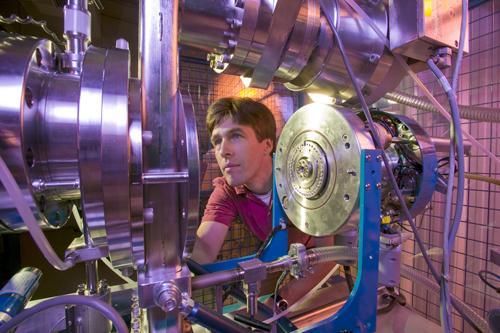Accelerator mass spectrometry (AMS) is a powerful bioanalytical method that allows for the analysis of specific elements in a sample. AMS technologies are broadly used in the biomedical, toxicology and pharmacology field. It can be used for the labeling of drugs for drug tracing studies, bone mass measurements, the assessment of environmental toxicants, and for drug-target binding as a biomarker of response to chemotherapy. The technology works by converting the atoms in the sample into a beam of fast-moving ions which will then be measured by a magnetic or electric field. AMS technologies require a minimum sample size (less than 1 mg) of carbon and proper isotope dilution which can be a tedious and long process. Accurate analysis with AMS also depends on careful sample “accounting”: homogenization, control of any volatile components, and quantitation of amounts of carrier compounds. In addition, sample preparation and analysis by AMS can be very expensive. The technology described here reduces, from days to minutes, the time required for biochemical samples preparation and analysis by AMS. The technology also decreases the costs of sample preparation and analysis.
LLNL researchers have developed a variation of AMS technology that improves sample preparation, analysis, and cost for AMS. The device involves depositing liquid samples on an indented moving wire and passing the moving wire through a combustion oven to convert the carbon content of samples to carbon dioxide gas in a helium stream. The gas is then directed via a capillary to a high efficiency gas-accepting ion source for AMS analysis (see Figure). The device is also applicable to handling continuous flows of liquid enabling on-line real-time liquid chromatography. This technology allows for assessment of human-relevant exposure levels directly in humans and reduces extrapolation from animal and in vitro testing.
- Continuous flows of liquid enabling on-line real-time liquid chromatography
- Allows assessment of human-relevant exposure levels directly in humans (e.g., microdosing phase 0 PK studies)
- Reduces extrapolation from animal and in vitro testing
- Identification of biomarkers of exposure to help guide therapeutic intervention
- Drug development: reducing time, cost, and late-stage failures
- Biochemical samples analysis
- Biomedical field
- Drug development
- Nuclear weapon testing
- Environmental studies
- Carbon Cycle research
LLNL has obtained a patent (US Patent 8,642,953) covering this technology (LLNL Internal Case # IL-12365).


